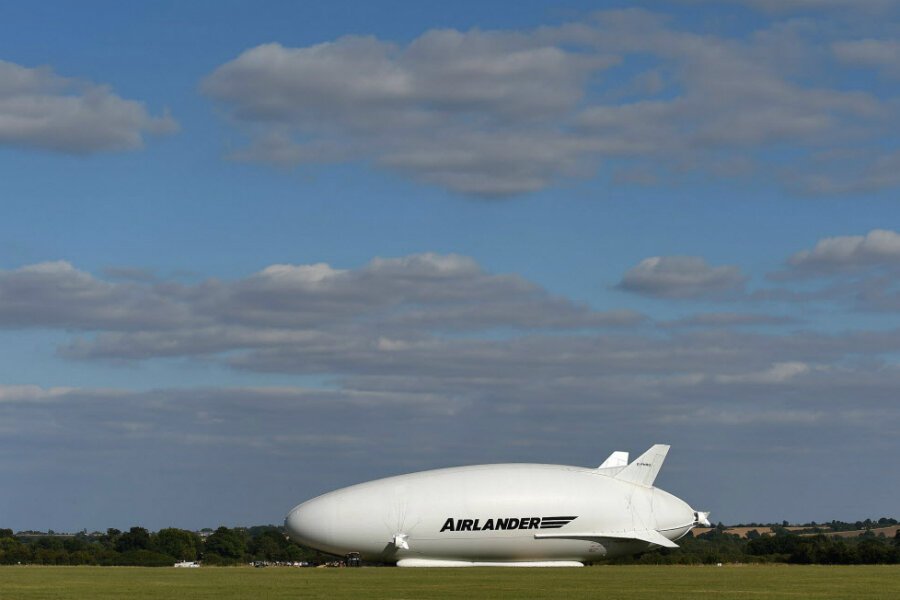Airlander 10 delay: Why the rebirth of dirigibles was put on pause
Loading...
It looks like the blimp may have to wait a bit longer for its big comeback.
Technical issues delayed the maiden voyage of Airlander 10, a helium-filled airship, on Sunday, as it prepared for its first test flight near Shortstown, England. Once it's airborne, however, British manufacturer Hybrid Air Vehicles (HAV) say the craft could help rebrand blimps as a relevant commercial technology.
HAV claims the aircraft, which is capable of carrying loads of up to 10 tonnes, could be used for surveillance, communications, delivering aid and even passenger travel.
But Airlander's first trip was marred by a “slight technical issue” just before takeoff, said Stephen McGlennan, HAV’s chief executive, as the Associated Press reported, and its crew feared the problem would not be resolved before dusk. The flight has not yet been rescheduled.
The 300-foot Airlander 10 was originally built under contract with the US Army, which intended to use it for surveillance missions in Afghanistan. But after budget cuts nixed the military’s blimp program, the Pentagon sold the ship back to HAV in 2013. For two years, the ship's developer sought funding from other government agencies and individual donors, and in 2015, the British government awarded HAV a $5.25 (£3.4) million grant to get Airlander 10 airborne again.
After a series of fatal incidents in the early 20th century, including the Hindenburg tragedy in 1937 and Great Britain’s R101 crash in 1930, airships were considered a failed experiment in aviation. According to HAV officials, however, Airlander 10’s in-flight efficiency could make it a viable commercial technology.
The craft is built to stay aloft for up to two weeks, flying up to 90 miles per hour. Despite being the world's largest aircraft, its "lighter-than-air" constructions makes it significantly less expensive to operate than traditional planes: just 10 to 20 percent of a helicopter's costs, for example.
Mr. McGlennan has compared the craft to other “disruptive” technologies, such as the electric car, that are often difficult to integrate into mass use.
“Something that disruptive, it’s always long, and it’s always a winding road,” McGlennan told the Associated Press.
This report includes material from the Associated Press.






